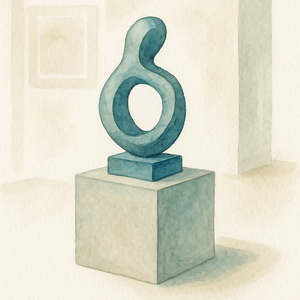Artefacts from the Future
This creative method invites participants to bring a possible future to life by designing or imagining a tangible object from that world. In the same way that we have historical artefacts from the past, this exercise is all about creating a tangible “artefact from the future.” It’s a way to make abstract scenarios feel real, prompting empathy, engagement, and grounded conversation.
Artefacts from the future can be run in a 2D or 3D approach.
When adopting the 3D approach, this method shifts participants into a making mindset. This engages their analytical thinking as well as intuition, improvisation, and embodied creativity. This helps surface insights that might not emerge through discussion or writing alone.
Goal
To embody a possible future through a physical or visual object, and explore what that future might mean for people, systems, or organisations today.
Materials
Instructions
1. Begin by setting a time horizon and context. Link to an existing scenario or simply ask: “Imagine a future 10–20 years from now where something significant has changed.”
2. Ask each group to imagine and create an artefact from that future. This might be a product, policy, tool, app, document, object, or system element.
3. Give teams a choice:
◦ Option A (2D): Draw, write, or digitally sketch the artefact
◦ Option B (3D): Build the artefact using craft materials, found objects, or Lego. Encourage improvisation.
4. Ask each group to consider:
◦ What is this object for?
◦ Who uses it, and how?
◦ What problem does it solve or create?
◦ What does it suggest about the values of this future?
5. Each group shares their artefact. Presentations can include naming, advertising, or role-play as if speaking from that future world.
6. Reflect as a group: What themes appeared? What felt compelling or strange? What shifts in today’s world would make these artefacts possible?
Facilitation tips
- Encourage rough ideas and playfulness. Clarity of concept matters more than polish.
- Use physical materials to engage different learning styles and creative approaches.
- Provide gentle time prompts or consider using strict time-boxing. Building can be immersive and groups may lose track.
Background
This method is rooted in design fiction and speculative design, popularised by the Near Future Laboratory and others. It is used in futures, innovation, and education settings to bring the abstract into focus through story and form.



Comments (0)